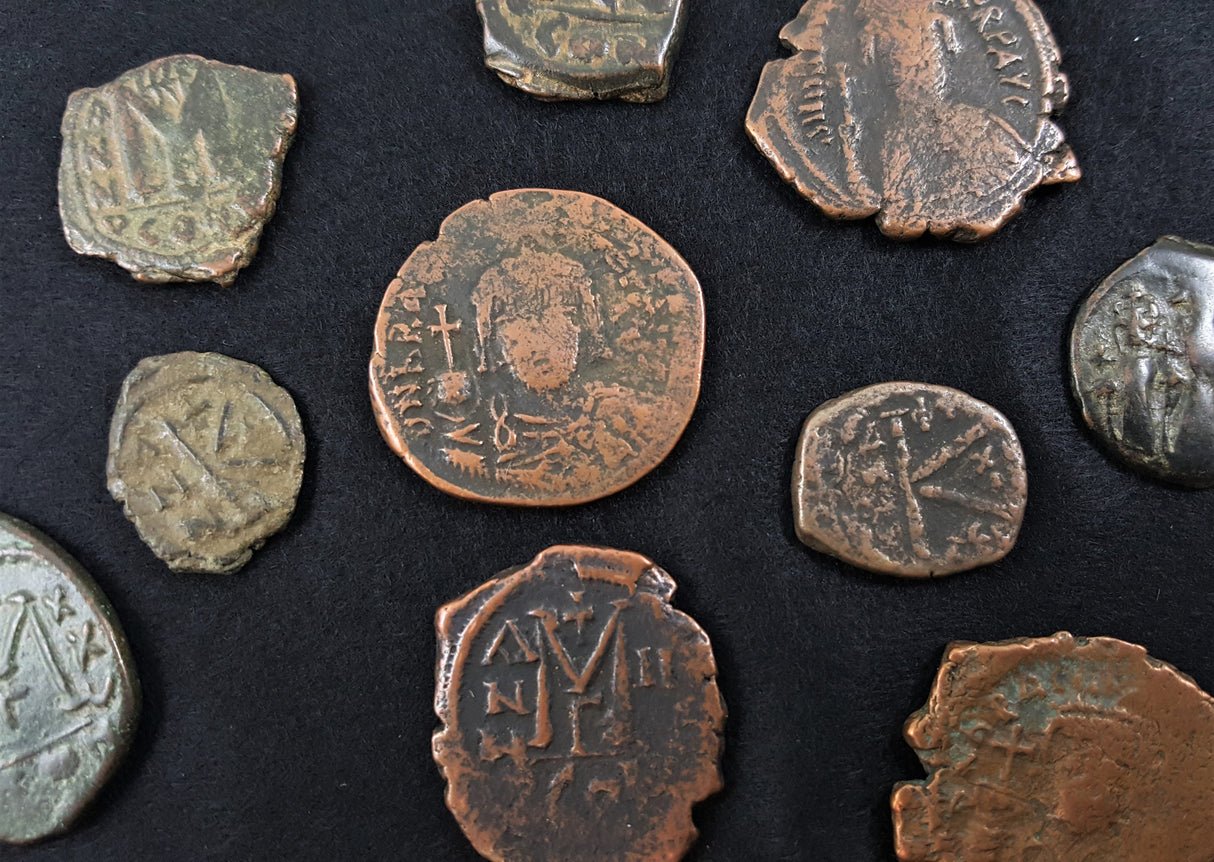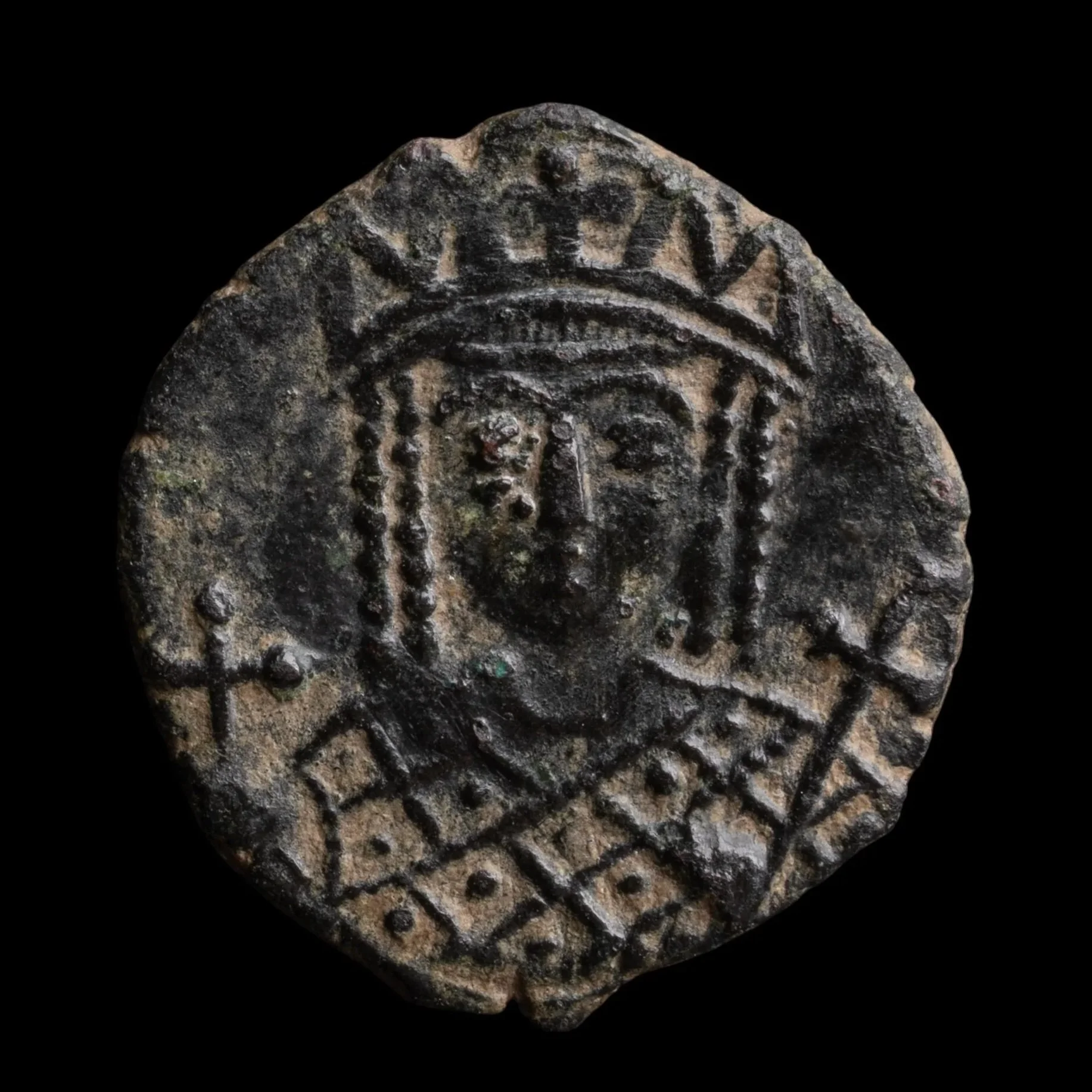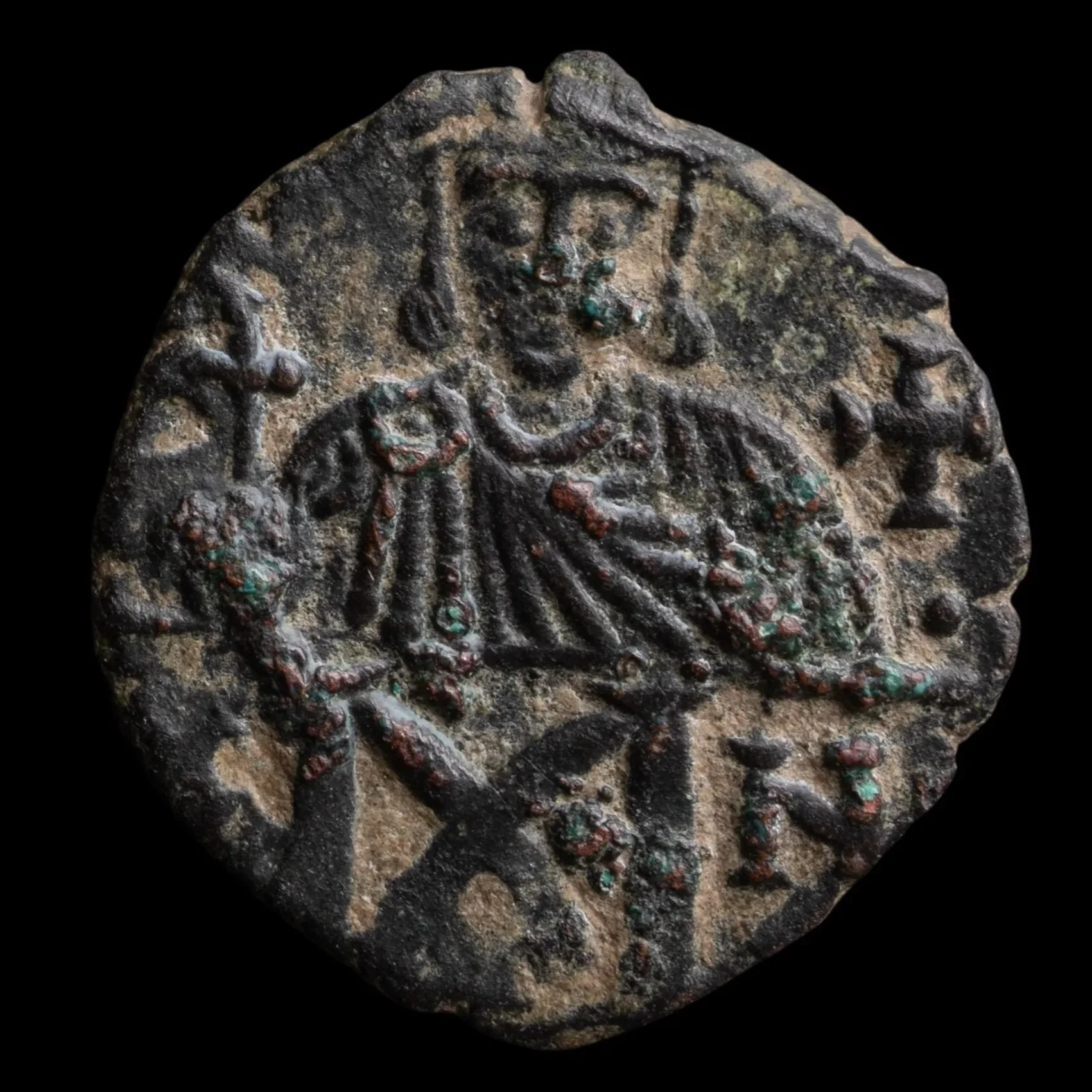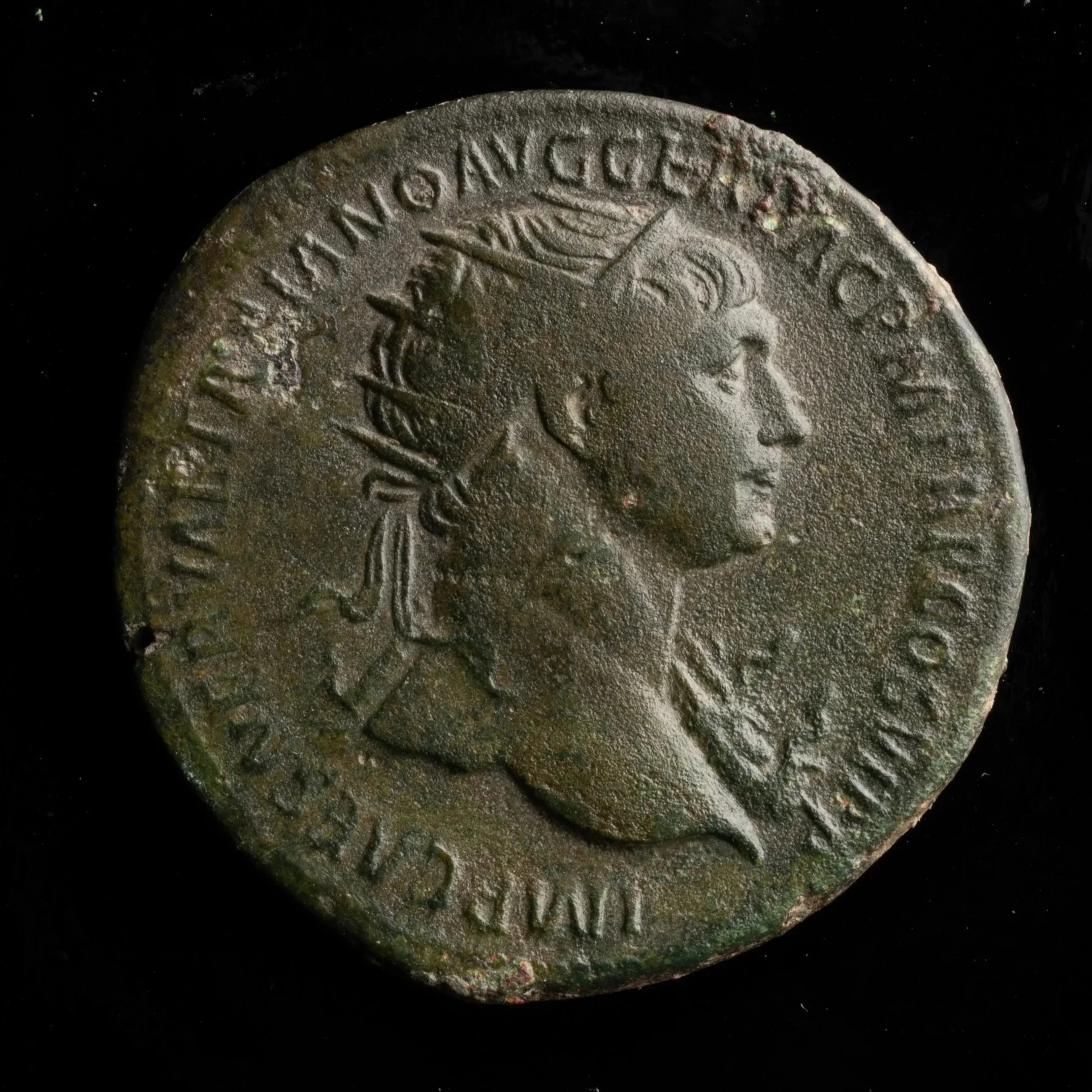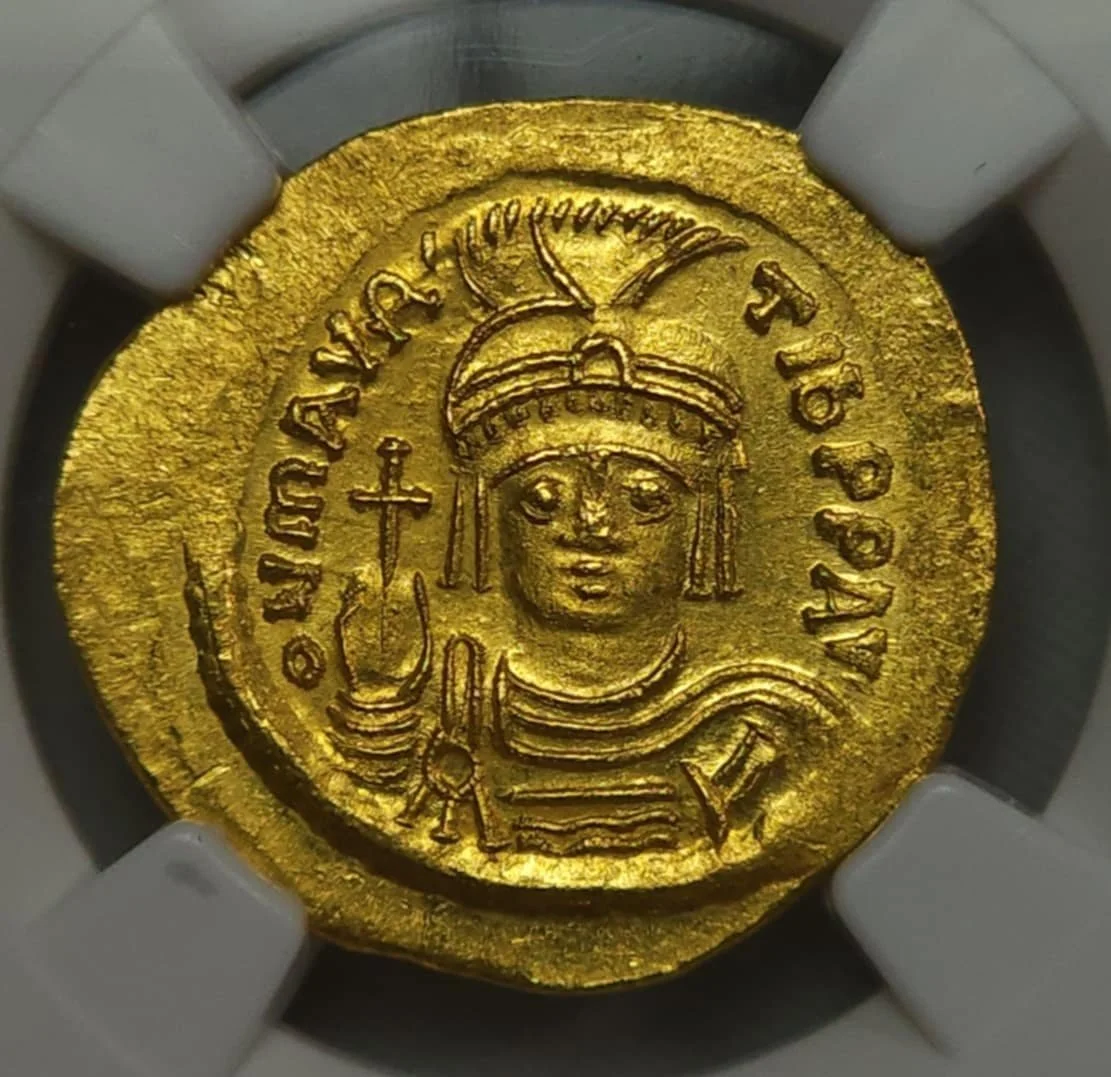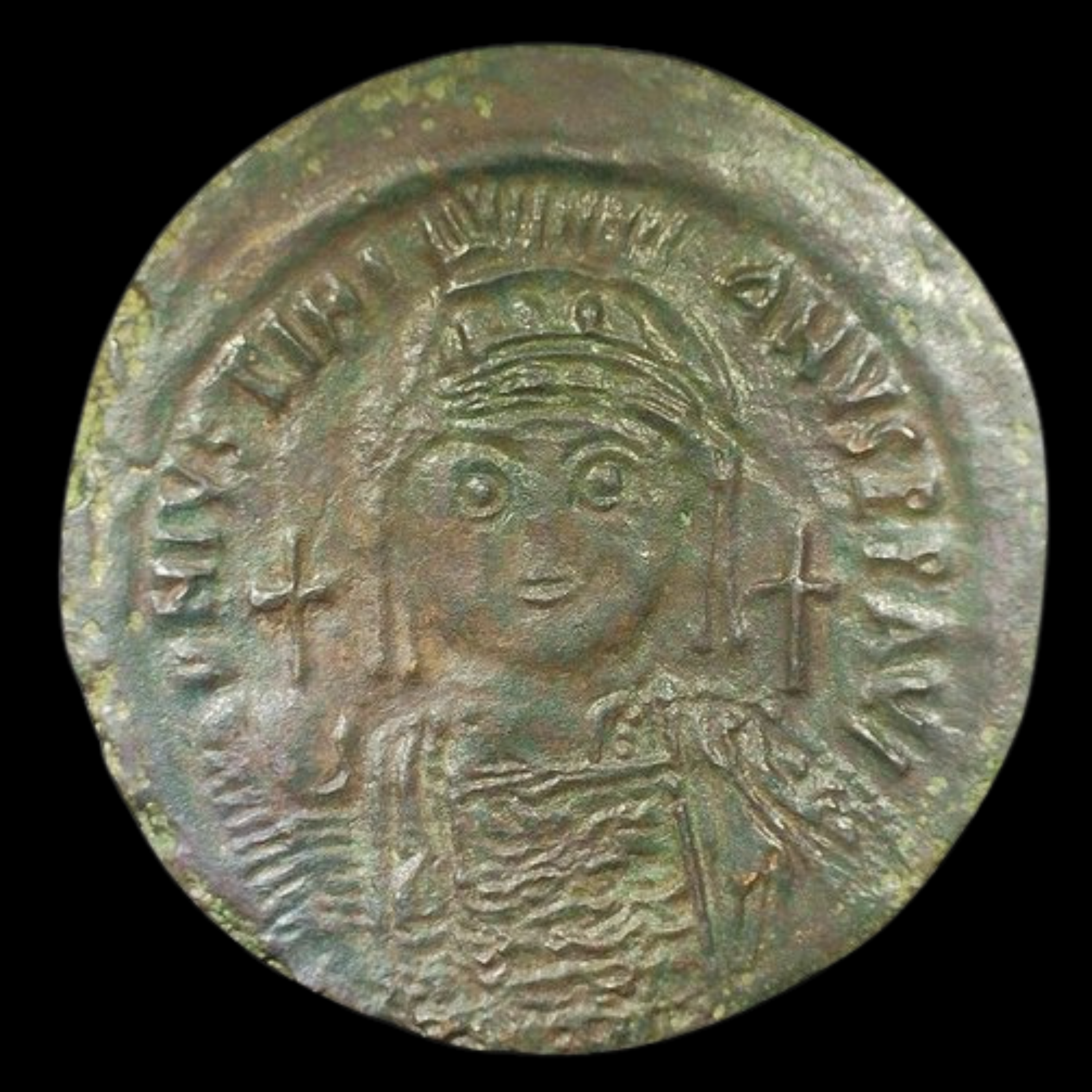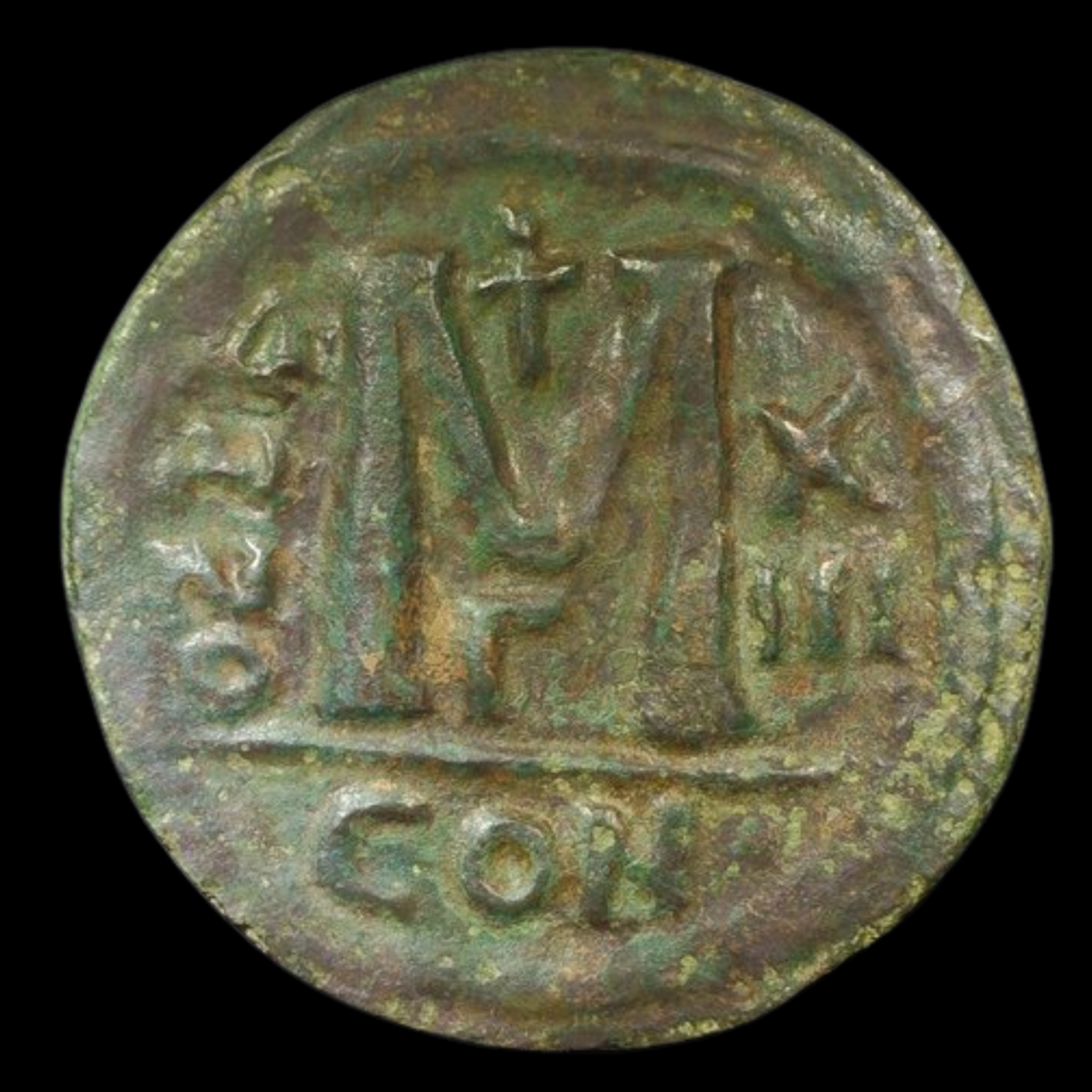 Image 1 of 1
Image 1 of 1


Late Byzantine Cup-Shaped Bronze Trachy (about 825-725 years ago)
This distinctive cup-shaped bronze coin, known as a trachy (plural: trachea), was issued by the Byzantine Empire during the Komnenian or Palaiologan dynasties. Minted in Constantinople (modern Istanbul, Turkey) or other imperial centers, this concave coin represents the late medieval period of Byzantine civilization as the empire faced mounting external pressures.
Coin Description:
Front side: Typically depicts Christ Pantokrator (Christ the Almighty) or the Virgin Mary, rendered in a stylized Byzantine artistic manner. Christ may be shown enthroned or standing, holding a Gospel book, while the Virgin might appear in an orans (prayer) pose or holding the Christ child.
Back side: Features the reigning Byzantine emperor in imperial regalia, often shown being crowned or blessed by Christ, the Virgin Mary, or a patron saint, symbolizing divine approval of imperial authority. Greek inscriptions identify the emperor and his titles.
Technical Details:
Material: Bronze, sometimes with traces of silver wash
Denomination: Trachy (a common bronze denomination in the late Byzantine monetary system)
Minting date/period: c. 1200-1300 CE (approximately 825-725 years ago)
Condition: Varies by specimen
Historical Significance:
This curious cup-shaped coin circulated during a period of political instability and decline for the Byzantine Empire. The elaborate religious imagery reflected the deeply Orthodox Christian character of Byzantine society, while showing the emperor under divine protection underscored the sacred nature of imperial authority. The term "Byzantine" has become synonymous with political intrigue and complex scheming, reflecting the court politics of this period. Despite its diminished territory and resources, Constantinople remained a center of religious devotion and artistic refinement until its fall to the Ottoman Turks in 1453 CE.
This distinctive cup-shaped bronze coin, known as a trachy (plural: trachea), was issued by the Byzantine Empire during the Komnenian or Palaiologan dynasties. Minted in Constantinople (modern Istanbul, Turkey) or other imperial centers, this concave coin represents the late medieval period of Byzantine civilization as the empire faced mounting external pressures.
Coin Description:
Front side: Typically depicts Christ Pantokrator (Christ the Almighty) or the Virgin Mary, rendered in a stylized Byzantine artistic manner. Christ may be shown enthroned or standing, holding a Gospel book, while the Virgin might appear in an orans (prayer) pose or holding the Christ child.
Back side: Features the reigning Byzantine emperor in imperial regalia, often shown being crowned or blessed by Christ, the Virgin Mary, or a patron saint, symbolizing divine approval of imperial authority. Greek inscriptions identify the emperor and his titles.
Technical Details:
Material: Bronze, sometimes with traces of silver wash
Denomination: Trachy (a common bronze denomination in the late Byzantine monetary system)
Minting date/period: c. 1200-1300 CE (approximately 825-725 years ago)
Condition: Varies by specimen
Historical Significance:
This curious cup-shaped coin circulated during a period of political instability and decline for the Byzantine Empire. The elaborate religious imagery reflected the deeply Orthodox Christian character of Byzantine society, while showing the emperor under divine protection underscored the sacred nature of imperial authority. The term "Byzantine" has become synonymous with political intrigue and complex scheming, reflecting the court politics of this period. Despite its diminished territory and resources, Constantinople remained a center of religious devotion and artistic refinement until its fall to the Ottoman Turks in 1453 CE.


